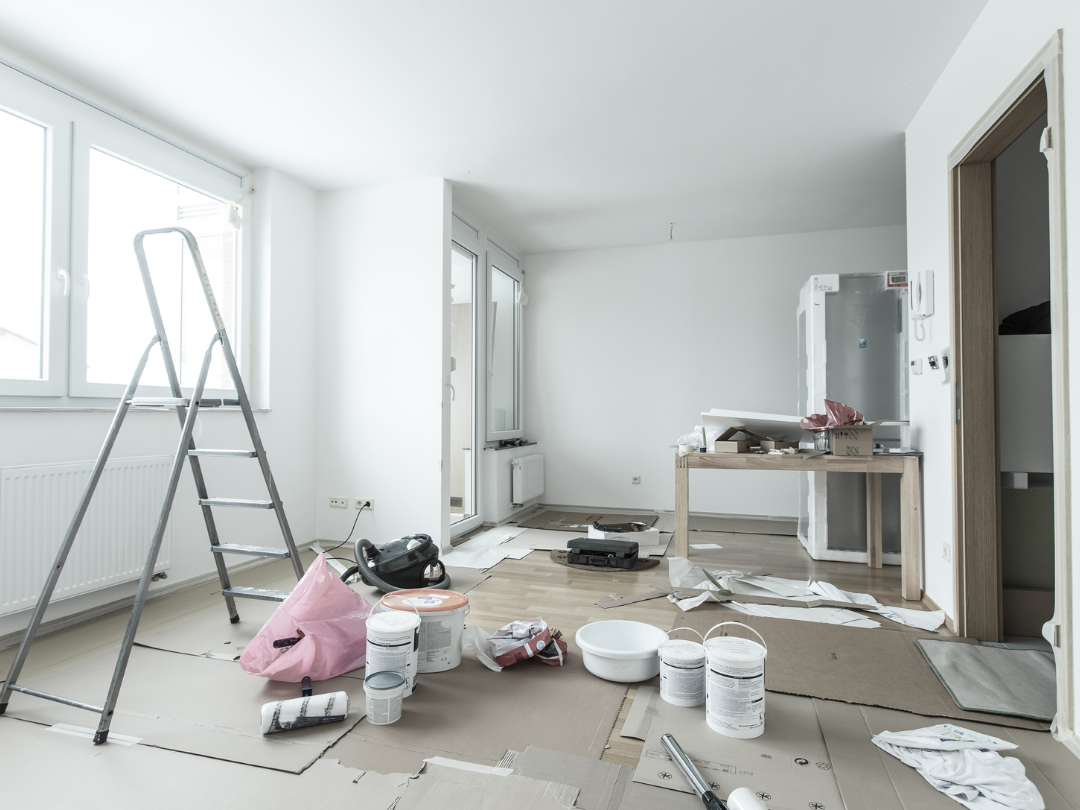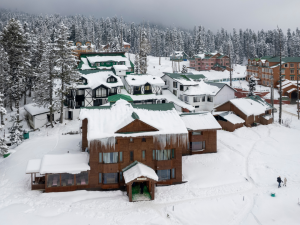Get the week's most popular posts delivered to your inbox.
Our weekly update is free yet priceless and you're less than a minute away from getting the current edition.
In the unlikely event we disappoint, you can unsubscribe with a single click!
Last Updated on October 30, 2025 by teamobn
Did you know that only 20% of your backyard renovation budget usually goes toward materials, while the remaining 80% is spent on labor? That’s right—the majority of your costs often come from digging, building, and installation rather than the pavers, plants, or decorative elements themselves.
The good news is that with thoughtful planning and a smart DIY approach, you can significantly reduce those expenses while still creating the outdoor oasis you’ve been dreaming of.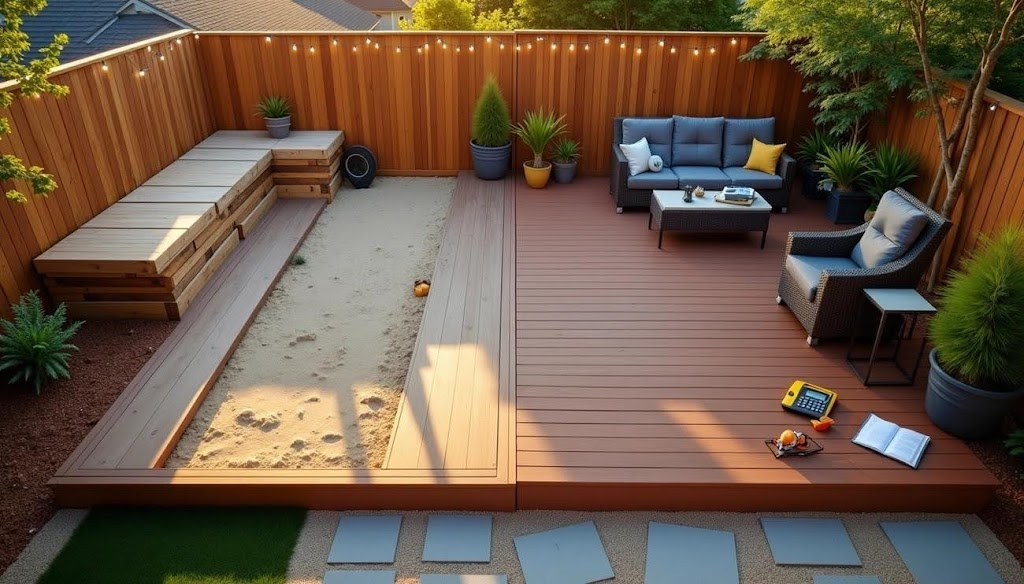
We know that starting a backyard remodel can feel overwhelming. Creating beautiful and functional outdoor spaces takes planning and a bit of know-how. While landscape specialists may bring decades of experience to the table, this guide is designed to give you the confidence and tools to manage your project efficiently.
This article will walk you through the entire process. You’ll learn how to set clear goals, build a practical budget, choose the right materials, and decide which DIY projects can help you save the most. Let’s start planning a backyard you’ll love.
Before you start sketching layouts or pricing pavers, make sure you’ve covered the essential things to know before starting your outdoor renovation. Understanding permits, site drainage, utility locating, and realistic phasing can save you from costly mid-project surprises and help you prioritize the features that matter most.
With that foundation in place, you can confidently set goals, map zones for dining, play, and relaxation, and build a budget that anticipates materials, rentals, and a contingency buffer — so every dollar works harder toward the backyard you actually use.
Contents
Set Your Backyard Goals
The foundation of every successful backyard renovation begins with clearly defined goals. Before picking up a shovel or visiting a garden center, take time to envision what you truly want from your outdoor space.
Decide how you want to use the space
Creating a versatile backyard starts with identifying specific activity zones that align with your lifestyle. Rather than treating your yard as one large, undefined area, consider dividing it into purposeful sections. First, visualize your dream yard without holding back—this exercise helps clarify what matters most to you.
When determining how you’ll use your space, consider these primary functions:
- Family gatherings: Space for dining, play areas for children, or a pool
- Relaxation: Quiet spots for reading, meditation, or enjoying morning coffee
- Entertaining: Areas for cooking, conversation, and hosting guests
- Gardening: Beds for vegetables, flowers, or native plants
For optimal functionality, carefully map the traffic flow through your yard. Understanding how people will move between zones is critical—you want easy access with no obstacles hindering movement.
List must-have features for your lifestyle
Once you’ve determined how you’ll use your space, prioritize specific features that support those activities. Importantly, when working with limited square footage, write out your desires and rank them according to importance. This prevents overcrowding your renovation plan with competing elements.
Consider these popular backyard features based on your priorities:
For cooking enthusiasts, an outdoor kitchen might include a grill, a countertop for food prep, closed storage, and a side burner. If entertaining tops your list, incorporate comfortable seating areas, a fire pit, and perhaps a pergola for shade.
Many homeowners now prioritize water features — decorative pools, splash pools, and spas ranked as the most popular recreation amenities in a recent survey by the American Society of Landscape Architects. Additionally, if privacy concerns you, explore options ranging from fencing and latticework to dense plantings and green screens.
When you’ve outlined your zones and must-have features, feed your imagination with inspiring outdoor renovation ideas to see how others balance function, flow, and style. Browsing real-world examples can help you refine materials, scale, and focal points, whether that’s a pergola over a dining nook, layered native plantings for privacy, or a compact fire feature that anchors conversation.
Use what resonates to create a short mood board and a few “hero” elements that tie the plan together.
Plan the Layout and Budget
Now that you’ve identified your backyard goals, translating them into a visual plan and a realistic budget is essential for success. A proper plan prevents costly mistakes and helps you prioritize expenses where they matter most.
Sketch a rough layout of your backyard
Creating a detailed sketch serves as your blueprint throughout the renovation process. Start by measuring your yard’s exact dimensions, noting property boundaries and existing features you plan to keep. For accuracy, obtain your deed map from county records to verify property lines and potentially locate underground utilities.
On graph paper, draw your space to scale (1 inch = 10 feet works well for most yards). Include fixed elements like your house, existing trees, patios, and utilities. Note important environmental factors such as sunny or shady areas, soil types, and drainage patterns. This thorough assessment prevents potential problems during construction.
Estimate costs for each feature
Backyard renovations for a 1,000 sq. ft. space typically cost around $30,000, while 2,000 sq. ft. spaces average $50,000. Consequently, establishing a realistic budget is crucial. Always include a 10-20% contingency fund for unexpected expenses.
Break down your budget into categories:
- Materials (pavers, lumber, plants, lighting)
- Labor costs
- Permits and inspections
- Equipment rentals
- Disposal fees
Consider phasing your project to spread costs over time. Furthermore, research shows that pools, retaining walls, slopes, and demolition are the biggest cost drivers, so budget accordingly.
As you break down costs by feature and set aside a 10–20% contingency, get specific about trade-offs — materials vs. labor, phasing vs. all-at-once, and DIY vs. pro tasks.
If your priority is stretching dollars without sacrificing impact, dive into how to plan landscaping on a tight budget for tactics like material substitutions, timing purchases seasonally, and sequencing projects to minimize rentals and waste. Pair those strategies with a line-item spreadsheet and you’ll keep spending disciplined while still moving the backyard toward your long-term vision.
Check for underground utilities before finalizing plans
Calling 811 is not just recommended; it is legally required before digging. This free service marks public utility lines and helps prevent potentially dangerous and costly accidents. Each year, utility damages lead to an estimated $30 billion in repair costs across the country.
For any private lines, such as those running to sheds, garages, pools, or detached structures, you will need to take an extra step. Hiring professionals who specialize in locating private lines can protect your project from delays and unexpected expenses.
Many homeowners begin by searching for private utility locating companies near me to ensure they identify all hidden lines before construction begins. Though there may be a small fee, this added layer of safety is a smart investment that can save you thousands in the long run.
Choose Materials and DIY Tasks
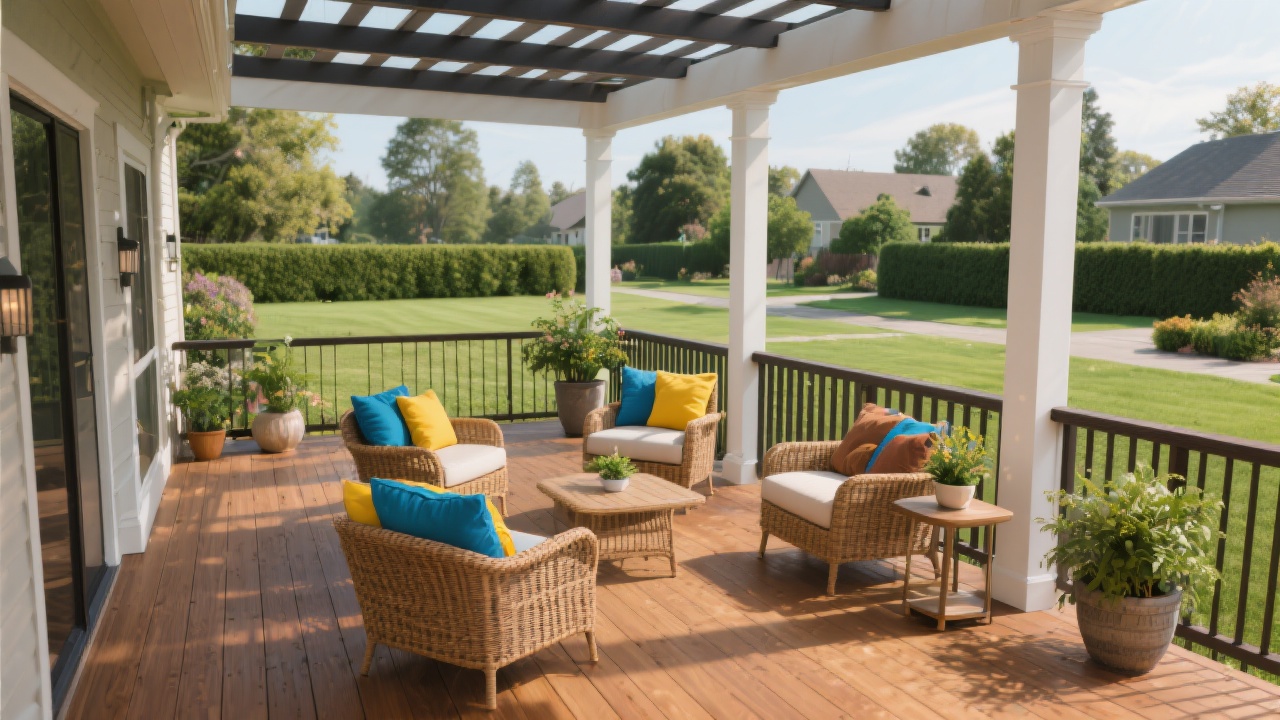
Choosing the right materials and deciding which tasks to take on yourself are two of the most important decisions you’ll make during your backyard renovation.
Consider the following when making your selections:
- Opt for durable, low-maintenance materials: Concrete and pavers are popular options for patios thanks to their long lifespan and minimal upkeep. Concrete can be stained or stamped for a custom look while remaining affordable. Pavers make repairs easy since individual pieces can be swapped out without disturbing the entire surface. Porcelain pavers are another smart option.
- Compare composite and natural wood for decking: While natural wood may seem cost-effective upfront, it requires ongoing painting, staining, and sealing to stay in good shape. Composite decking, on the other hand, needs only occasional sweeping or washing. Many composite brands now offer extended warranties of 25 to 50 years, providing added peace of mind.
- Decide which projects to do yourself and which to hire out: Evaluate your time, skills, and the complexity of each task. DIY is often a great fit for painting, basic landscaping, or installing pre-made features like garden beds. However, specialized work—such as electrical, plumbing, or major structural changes—is best left to licensed professionals.
- Check local codes and permit requirements: Before beginning any major construction, research your area’s regulations. Projects like decks, retaining walls, or room additions often require permits to ensure they meet safety and zoning standards. Skipping this step can result in penalties, forced tear-downs, or difficulties when selling your home.
Build and Save Smartly
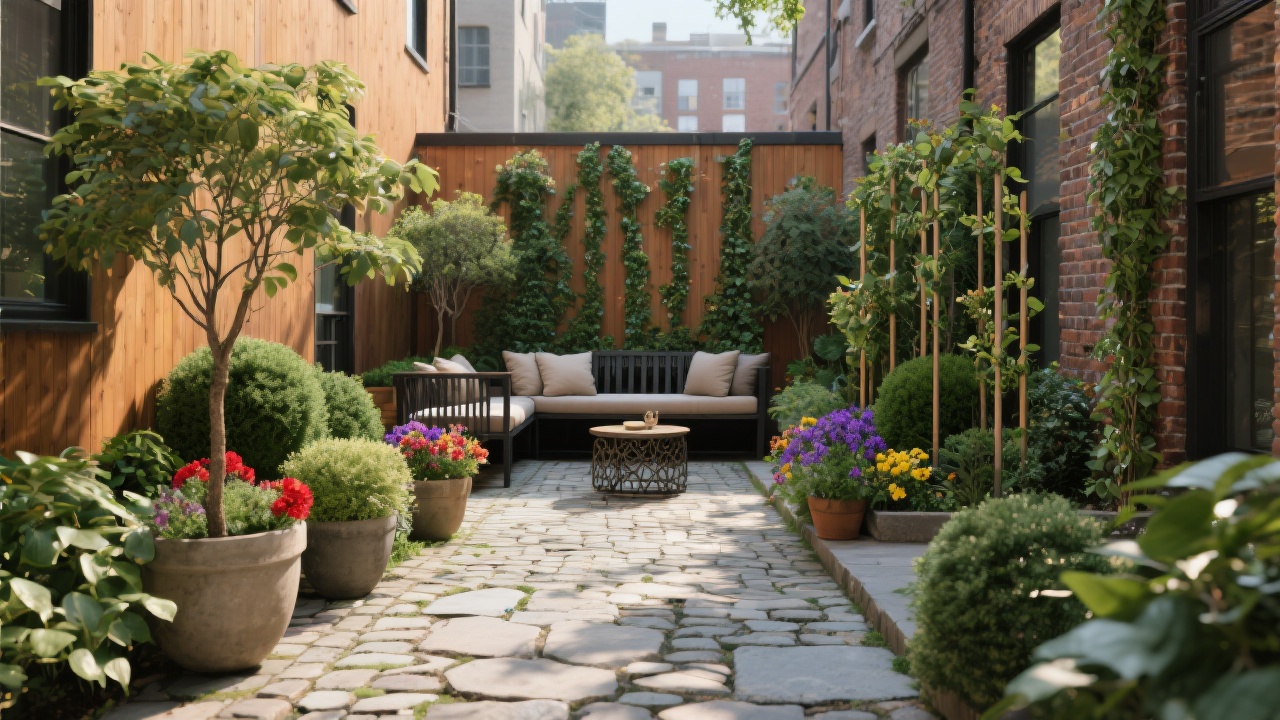
With your plans finalized and materials selected, it’s time to bring your backyard vision to life. A thoughtful and strategic construction approach can help you stay within budget while still achieving professional-quality results.
Here are practical ways to stretch your budget without compromising on style or function:
- Start with demolition and prep work: Taking on demolition yourself can save a significant portion of your budget. Before you begin, prioritize safety by wearing protective gear such as safety glasses, work gloves, and a hard hat when working overhead. For larger areas with concrete, consider renting a walk-behind floor scraper to make the job easier and faster.
- Tackle simple, high-impact DIY projects: Begin with smaller upgrades that are easy to manage but offer a strong visual return. For example, weather-resistant LED string lights can add charm and ambiance without draining energy. Custom planters made from salvaged or inexpensive materials can add personality to the space.
- Use phased construction to manage costs: Instead of completing the entire renovation at once, break it into stages. This way, you might spend a portion of your budget this year on a patio, then add features like a fire pit or outdoor kitchen in the following years. Planning in phases allows you to use seasonal income like tax refunds or bonuses, while still progressing steadily.
- Track expenses and remain flexible: Keep a detailed spreadsheet of all purchases, receipts, and remaining funds to stay organized and on budget. It’s wise to set aside a contingency fund of 10 to 20 percent for unexpected costs, as most renovation projects exceed initial estimates.
Conclusion
Transforming your backyard does not have to come with a hefty price tag or rely entirely on professional help. With thoughtful planning, clear goals, and a practical approach to doing things yourself, you can create a beautiful and functional outdoor space while keeping your budget in check.
Every decision you make, from setting priorities to choosing materials and pacing the construction, plays a role in bringing your vision to life. By focusing on what truly matters to your lifestyle and staying flexible as the project unfolds, you can avoid costly mistakes and enjoy the process along the way.
Now that you have a step-by-step guide, the only thing left to do is begin. One smart choice at a time, you are well on your way to building a backyard that is both rewarding and uniquely yours.
If you’re looking for a concrete example of these planning principles in action, see how this backyard studio was built to understand site prep, phasing, budget allocation, and the DIY-versus-pro split on a real project. Walking through a start-to-finish build can clarify timelines, material choices, and where small decisions—like utility placement or footing design—deliver big savings and long-term usability.
Get the week's most popular posts delivered to your inbox.
Our weekly update is free yet priceless and you're less than a minute away from getting the current edition.
In the unlikely event we disappoint, you can unsubscribe with a single click!




